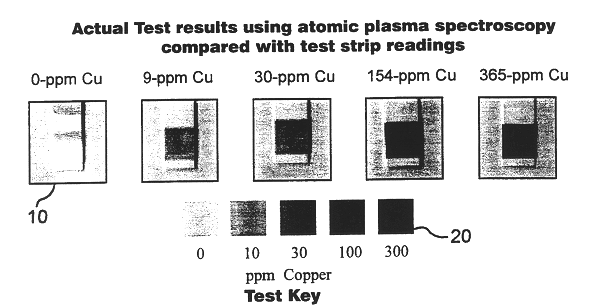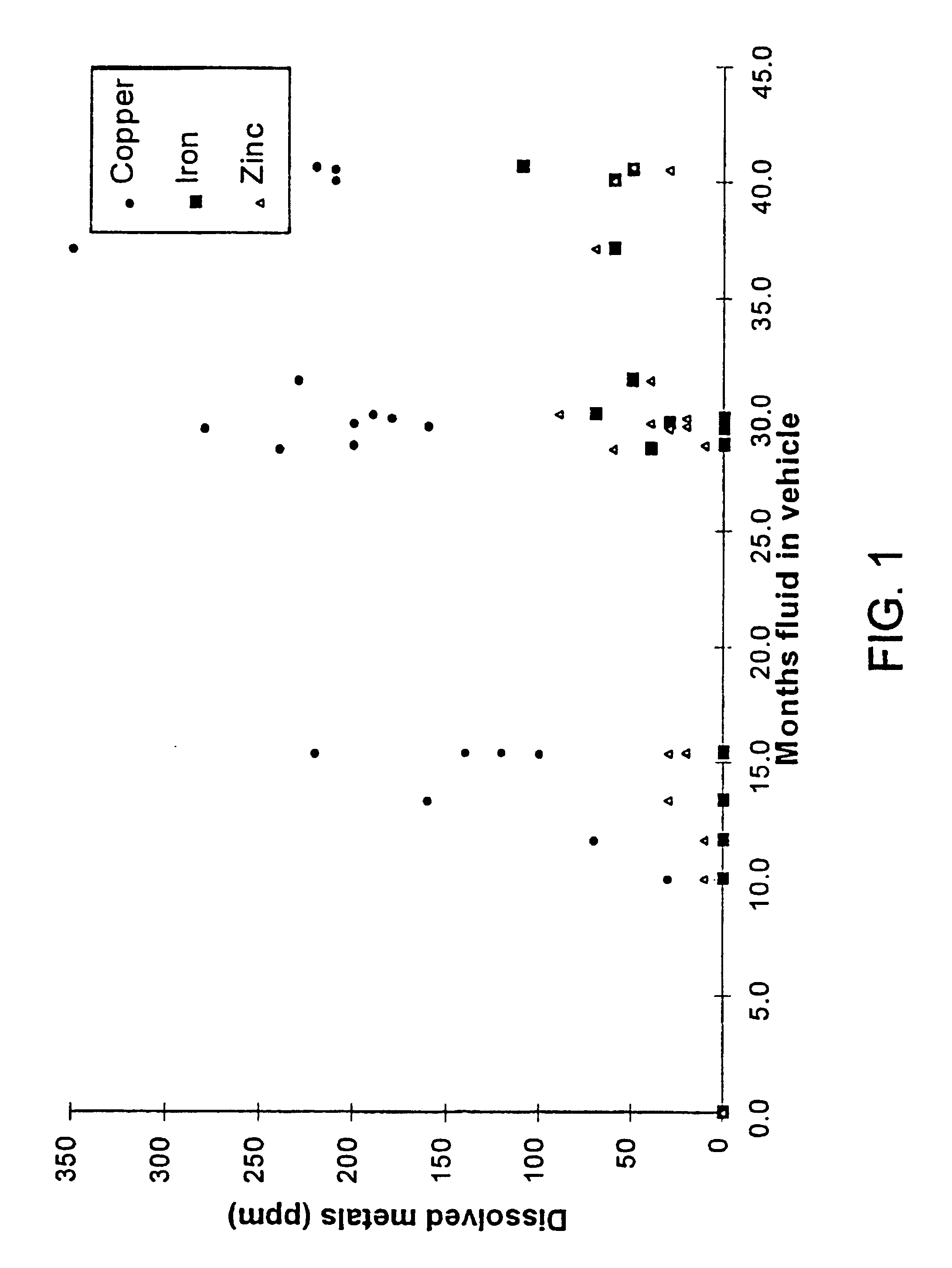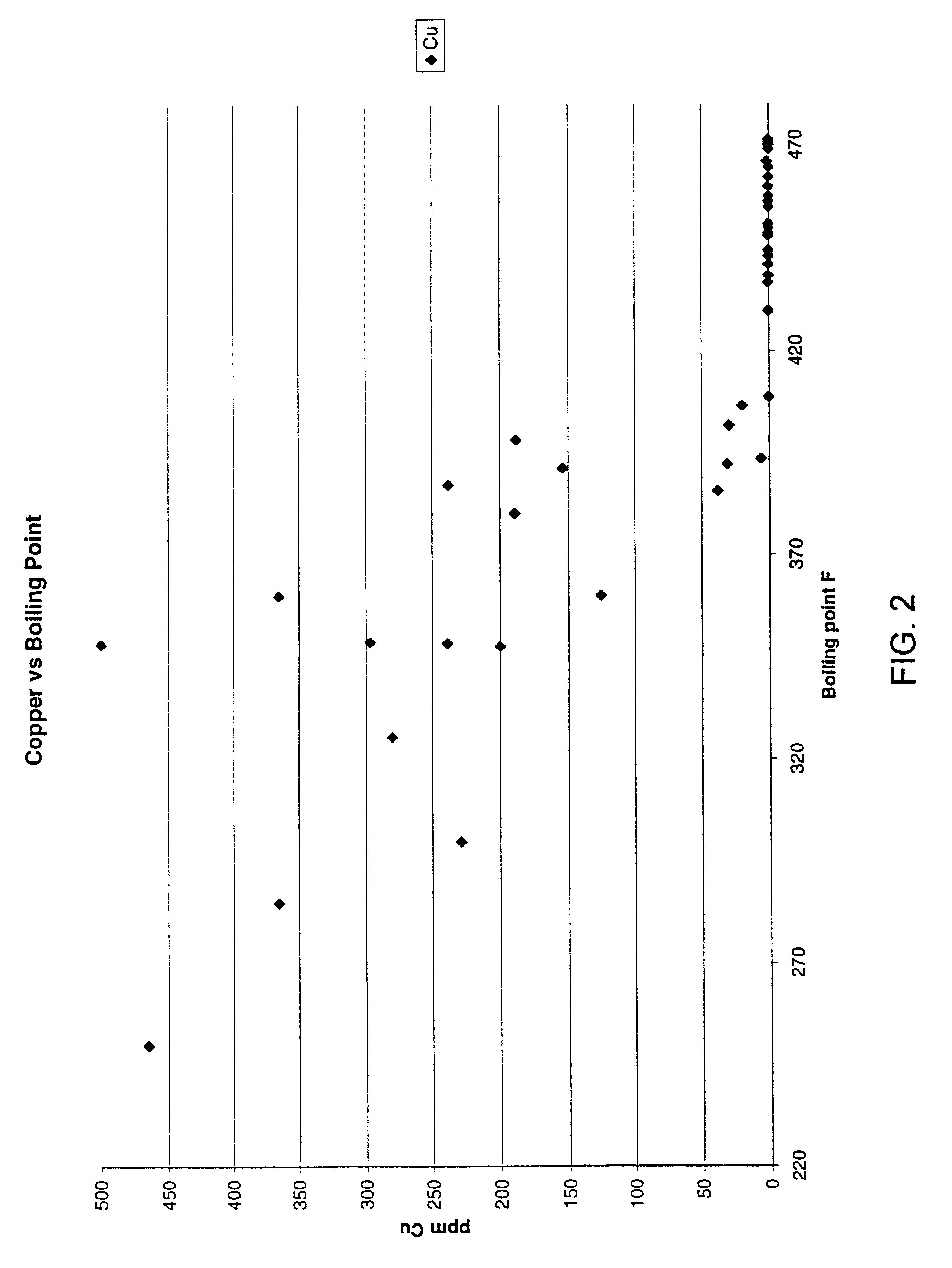Test for brake fluid age and condition
- Summary
- Abstract
- Description
- Claims
- Application Information
AI Technical Summary
Benefits of technology
Problems solved by technology
Method used
Image
Examples
Embodiment Construction
This invention is based on the realization that the concentration of certain metals in brake fluid increases with the age of the fluid in operation and is predictably correlated to the degradation of its boiling point and reserve alkalinity. Copper, iron and zinc are three metals commonly found in automotive brake systems. Most brake lines, which represent the highest surface area of metal in contact with brake fluid, consist of steel lined with a copper alloy. A typical light-duty vehicle uses about 14 meters of such pipe with an inside diameter of about 2.5 mm, for a total internal surface area of about 1,200 cm.sup.2. Therefore, corrosion of these lines contributes relatively large amounts of copper ions to the fluid. The master and slave cylinders include steel components that are also susceptible to corrosion as the water content of the fluid increases and its reserve alkalinity decreases. Typically, dissolved iron is known to appear in the brake fluid after the initial amine c...
PUM
 Login to View More
Login to View More Abstract
Description
Claims
Application Information
 Login to View More
Login to View More - R&D
- Intellectual Property
- Life Sciences
- Materials
- Tech Scout
- Unparalleled Data Quality
- Higher Quality Content
- 60% Fewer Hallucinations
Browse by: Latest US Patents, China's latest patents, Technical Efficacy Thesaurus, Application Domain, Technology Topic, Popular Technical Reports.
© 2025 PatSnap. All rights reserved.Legal|Privacy policy|Modern Slavery Act Transparency Statement|Sitemap|About US| Contact US: help@patsnap.com



